Writer/editor Stan Lee (1922-2018) made comic-book history together with Jack Kirby in 1961 with Fantastic Four #1. The monumental popularity of its new style inspired Lee to develop similarly themed characters — including the Hulk and X-Men with Kirby, Spider-Man and Doctor Strange with Steve Ditko, and Daredevil with Bill Everett. After shepherding his creations through dozens of issues — in some cases a hundred or more — Lee allowed other writers to take over, but he maintained steady editorial control. Eventually, he helped expand Marvel into a multimedia empire. In recent years, his frequent cameo appearances in Marvel’s films established Lee as one of the world’s most famous faces.
John Buscema (1927-2002) literally wrote the book on being a Marvel artist — namely, How To Draw Comics the Marvel Way — and few were better qualified. His career dated back to the Timely/Atlas era of the late ’40s and early ’50s. Soon after beginning the Marvel Age of Comics, Stan Lee recruited Buscema from the advertising field to the Marvel Bullpen. Buscema followed a long run on Avengers with the long-anticipated first Silver Surfer series. He subsequently succeeded Jack Kirby on Fantastic Four, Thor and other titles. By the time of his retirement in 1996, Buscema had penciled nearly every Marvel title — including his personal favorite, Conan the Barbarian.
Born Jacob Kurtzberg in 1917 to Jewish-Austrian parents on New York’s Lower East Side, Jack Kirby came of age at the birth of the American comic book industry. Beginning his career during the rising tide of Nazism, Kirby and fellow artist Joe Simon created the patriotic hero Captain America. Cap’s exploits on the comic book page entertained millions of American readers at home and inspired U.S. troops fighting the enemy abroad. When World War II ended, the public’s interest in super heroes waned; Kirby turned his artistic talents during the 1950s to other genres, such as monsters, Westerns and crime — as well as the first-of-its-kind Young Romance Comics. In 1961, Kirby returned to super heroes to illustrate what would become the defining issue in Marvel Comics history: Fantastic Four #1. Written by Stan Lee, the team’s debut revolutionized the industry overnight. In contrast to the staid artwork of his predecessors, Kirby’s illustrations seemed to leap off the page with eye-popping action and drama. For the next decade, Kirby and Lee would introduce a mind-boggling array of new characters — including the Avengers, the Hulk, Thor, Iron Man, the Silver Surfer and the X-Men. Taken together, Kirby’s groundbreaking work with Lee formed the foundation of the Marvel Universe. In the early 1970s, Kirby moved to DC Comics, where his boundless creativity continued. He returned to Marvel in 1975, writing and illustrating Captain America and introducing his final major concept, the Eternals. With the explosion of TV animation during the 1980s, Kirby’s talents turned to the small screen. Comic fans quickly recognized his work on such series as Thundarr the Barbarian and Turbo Teen. Kirby died in 1994, but his influence on the comic book industry is as strong as ever. His work has inspired a generation of professional artists and modern writers who continue to explore his vast universe of concepts and characters.


![Amazing Spider-Man Epic Collection: The Goblin's Last Stand [New Printing 2]](https://images.penguinrandomhouse.com/cover/9781302967796?width=180)
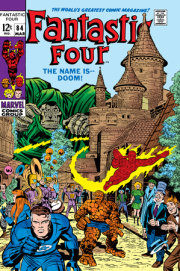
![X-Men Epic Collection: Lonely Are The Hunted [New Printing]](https://images.penguinrandomhouse.com/cover/9781302967697?width=180)
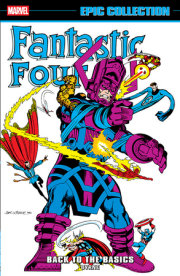



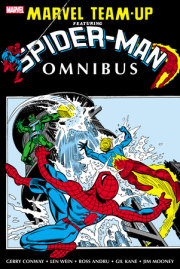















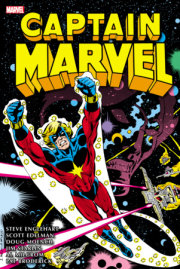






![Tomb Of Dracula Omnibus Vol. 1 Neal Adams Cover [New Printing 2]](https://images.penguinrandomhouse.com/cover/9781302965037?width=180)

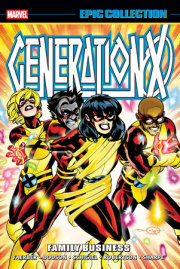




![Iron Man: Demon In A Bottle [New Printing 2]](https://images.penguinrandomhouse.com/cover/9781302961817?width=180)
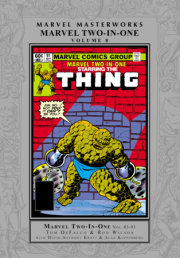

![Marvel Masterworks: The Amazing Spider-Man Vol. 4 [Remasterworks]](https://images.penguinrandomhouse.com/cover/9781302956066?width=180)


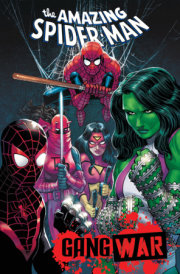




![Silver Surfer Omnibus Vol. 1 John Buscema First Issue Cover [New Printing 2]](https://images.penguinrandomhouse.com/cover/9781302963583?width=180)


![Marvel Masterworks: Captain America Vol. 1 [Remasterworks]](https://images.penguinrandomhouse.com/cover/9781302956028?width=180)
![Marvel Masterworks: The Fantastic Four Vol. 3 [Remasterworks]](https://images.penguinrandomhouse.com/cover/9781302956004?width=180)

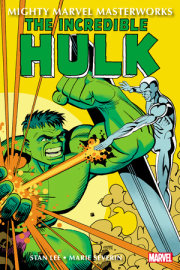

![Fantastic Four Epic Collection: World's Greatest Comic Magazine [New Printing 2]](https://images.penguinrandomhouse.com/cover/9781302960421?width=180)
![Captain America Omnibus Vol. 2 Carlos Pacheco Cover [New Printing]](https://images.penguinrandomhouse.com/cover/9781302958398?width=180)
![Incredible Hulk Epic Collection: Man Or Monster? [New Printing 2]](https://images.penguinrandomhouse.com/cover/9781302960438?width=180)

![Marvel Masterworks: The Amazing Spider-Man Vol. 3 [Remasterworks]](https://images.penguinrandomhouse.com/cover/9781302951429?width=180)
![The Invincible Iron Man Omnibus Vol. 2 Salvador Larroca Cover [New Printing]](https://images.penguinrandomhouse.com/cover/9781302958992?width=180)


![Marvel Masterworks: The Avengers Vol. 2 [Remasterworks]](https://images.penguinrandomhouse.com/cover/9781302951405?width=180)
![Avengers Epic Collection: Earth's Mightiest Heroes [New Printing]](https://images.penguinrandomhouse.com/cover/9781302957988?width=180)
![Captain America Epic Collection: Bucky Reborn [New Printing]](https://images.penguinrandomhouse.com/cover/9781302957858?width=180)

![X-Men Epic Collection: Children Of The Atom [New Printing 2]](https://images.penguinrandomhouse.com/cover/9781302957834?width=180)



![Amazing Spider-Man Epic Collection: The Secret Of The Petrified Tablet [New Printing]](https://images.penguinrandomhouse.com/cover/9781302957810?width=180)
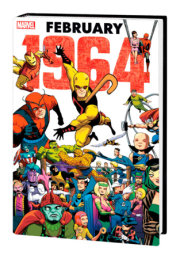






![Daredevil Epic Collection: Mike Murdock Must Die! [New Printing]](https://images.penguinrandomhouse.com/cover/9781302950569?width=180)






![Fantastic Four Epic Collection: The Coming Of Galactus [New Printing 2]](https://images.penguinrandomhouse.com/cover/9781302950415?width=180)
